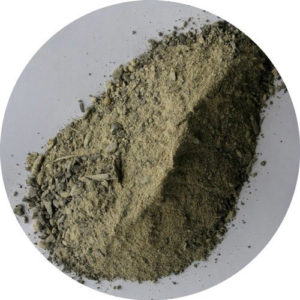
Contains:
Calcium Ca 15%
Magnesium Mg 7%
Bio carbon, minimum of 25%
Recommended Application Rate:
Intensive Dairying: 350 – 400 kg/ha annually
Sheep & Beef: 150 – 175 kg/ha annually or 300 – 350 kg/ha every second year.
The requirement for annual inputs of magnesium on nearly all dairy farms has been well understood, and it was our experience with Golden Bay Dolomite over more than a decade that led to the development of DoloZest.
Dolomite from Golden Bay, New Zealand’s only dolomite deposit, contains 11.5% magnesium and 24% calcium in the carbonate form. It’s an outstanding soil conditioner in its own right, reducing the negative effect of excessive treading pressure.
However, it’s the addition of our unique Zest component that makes the product an essential input for an increasing number of dairy farms throughout the country.
Zest when added to dolomite makes it not only an extremely effective and fast acting magnesium fertiliser, it also kick-starts the process of humus building.
The formation of humus begins with the sequestration of organic matter, i.e. dung, old root and dead grasses, and when fully digested by soil biology humus is formed.
Humus as we understand it is highly stable and able to withstand extreme treading pressure as well as the effect of severe drought and flooding.
Increasing the carbon content of soil is the basis of any pastoral farming system, and it’s the speed at which this takes place that dictates the rate at which production can be sustainably increased.
Without carbon being sequestered and humus developed pasture production becomes spikier, with the time between the spikes in growth and the troughs of slow growth coming closer together.
When the conditions necessary for strong pasture growth coincide:- nutrient availability + sunshine + favourable temperatures, pasture growth can exceed 90kgDM/ha/day, and where soil carbon is being constantly sequestered these high levels of growth can be maintained over a number of months.
Soil carbon, often referred to as soil organic matter (SOM), provides the storage for nutrients including nitrogen and moisture. Greater storage capacity means strong growth is maintained for longer, and the periods of slow growth lessen.
Carbon is also a highly effective filter and with reduced soil carbon the ability to retain nutrients, particularly nitrogen steadily declines. Nitrogen lost to groundwater is no longer available for plant growth, pasture growth slows and ultimately water requires costly treatment.
It’s only a matter of time before a dollar value is attached to carbon and properties where carbon is being sequestered will have greater value and command a higher price.
Unfortunately the answer is no. The majority of intensive dairy farms are losing carbon and have been for over thirty years, on average at a rate of 1.0 tonne/ha/year, which means one third of soil carbon on many farms has gone. The results of that loss are already obvious.
Although milk production per hectare has steadily increased over the same period, annual pasture production has steadily declined, with grazing off and bought in supplement filling the gap.
Summer growth has declined with ‘droughts’ now the norm even though rainfall figures have changed little over the same period. ‘Permanent’ pastures now require renovation or renewal every 4 – 5 years.
Animal ill-health costs have steadily escalated and regular veterinary intervention is now necessary even though dairy cows are one of the most robust animals alive. Empty rates are often in excess of 20% which means little if any room for discretionary culling.
In our view the loss of soil carbon can be attributed to excess nitrogen fertiliser use.
The use of DoloZest based total nutrient programmes containing phosphorus, potassium, and sulphur as required are not dependent on nitrogen fertiliser for exceptional growth.
On-going monitoring of properties using these programmes show growth to often be 20% higher than conventionally fertilised neighbouring farms, with annual production as high as 20 tonne/ha recorded.
It’s the unique suite of specifically selected beneficial fungi and bacteria that are largely responsible for the outstanding lift in performance.
Mycorrhizal fungi are highly efficient gatherers of phosphorus and moisture and form a symbiotic relationship with plant roots, with some of the extra energy plants are able to manufacture being returned to the fungi for further harvesting.
Mycorrhizal fungi are also able to extend the root zone of plants several times over and extract both nutrient and moisture plant roots are unable to reach.
Trichoderma are used to increase overall biological activity in the soil and are well-known pathogen suppressants allowing beneficial organisms to dominate.
A range of bacteria primarily involved with rapid breakdown of semi-digested organic matter are also included. These increase the speed at which the rapid organic cycle operates allowing soils to operate more efficiently reducing the requirement for large amounts of added nutrient.
The results of the addition of these microbes, along with higher than usual inputs of calcium that ensure the soil environment is suitable for their proliferation.
A unique Soil Improver containing Calcium (Lime), soft carbon and microbes for plant growth and soil health
Building Humus by speeding digestion. Contains lime and dolomite.
Our passionate team have been in the farming industry for many years, and are dedicated to helping you succeed.
Website powered by www.envydesign.co.nz